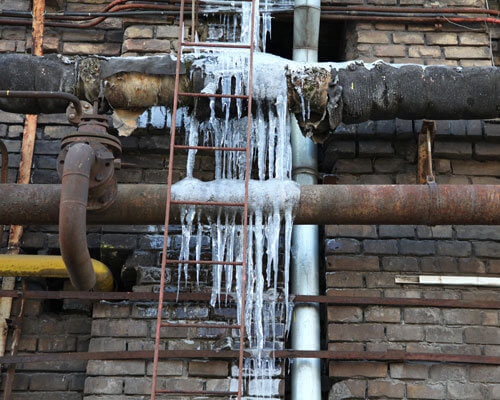We have unearthed this post relating to How to prepare your home plumbing for winter weather listed below on the web and reckoned it made sense to talk about it with you on this page.

Cold weather can damage your plumbing, particularly by freezing pipelines. Right here's just how to avoid it from happening and what to do if it does.
Intro
As temperature levels decrease, the risk of icy pipes rises, possibly resulting in costly repairs and water damage. Understanding how to avoid frozen pipelines is critical for property owners in cool environments.
Prevention Tips
Shielding prone pipelines
Wrap pipelines in insulation sleeves or use warmth tape to secure them from freezing temperature levels. Focus on pipes in unheated or outside areas of the home.
Home heating methods
Maintain interior areas effectively heated, especially areas with pipes. Open up closet doors to allow cozy air to flow around pipes under sinks.
Exactly how to determine frozen pipelines
Seek decreased water circulation from faucets, unusual odors or sounds from pipelines, and noticeable frost on revealed pipes.
Long-Term Solutions
Architectural changes
Consider rerouting pipelines far from exterior wall surfaces or unheated areas. Add added insulation to attic rooms, cellars, and crawl spaces.
Updating insulation
Buy high-grade insulation for pipes, attics, and wall surfaces. Proper insulation assists preserve constant temperatures and reduces the risk of frozen pipelines.
Shielding Exterior Pipes
Garden pipes and outdoor faucets
Disconnect and drain pipes yard hoses prior to winter. Mount frost-proof spigots or cover exterior taps with insulated caps.
Comprehending Icy Pipes
What creates pipes to freeze?
Pipelines ice up when subjected to temperatures below 32 ° F (0 ° C) for prolonged periods. As water inside the pipelines freezes, it expands, putting pressure on the pipe wall surfaces and potentially causing them to burst.
Dangers and damages
Icy pipes can lead to water interruptions, home damages, and expensive repair work. Burst pipelines can flood homes and cause considerable structural damage.
Indicators of Frozen Piping
Recognizing frozen pipes early can prevent them from rupturing.
What to Do If Your Pipes Freeze
Immediate actions to take
If you think frozen pipes, keep taps available to alleviate stress as the ice thaws. Make use of a hairdryer or towels soaked in hot water to thaw pipelines gradually.
Final thought
Preventing frozen pipes calls for positive measures and quick reactions. By recognizing the reasons, indications, and preventive measures, home owners can safeguard their pipes throughout cold weather.
5 Ways to Prevent Frozen Pipes
Drain Outdoor Faucets and Disconnect Hoses
First, close the shut-off valve that controls the flow of water in the pipe to your outdoor faucet. Then, head outside to disconnect and drain your hose and open the outdoor faucet to allow the water to completely drain out of the line. Turn off the faucet when done. Finally, head back to the shut-off valve and drain the remaining water inside the pipe into a bucket or container. Additionally, if you have a home irrigation system, you should consider hiring an expert to clear the system of water each year.
Insulate Pipes
One of the best and most cost-effective methods for preventing frozen water pipes is to wrap your pipes with insulation. This is especially important for areas in your home that aren’t exposed to heat, such as an attic. We suggest using foam sleeves, which can typically be found at your local hardware store.
Keep Heat Running at 65
Your pipes are located inside your walls, and the temperature there is much colder than the rest of the house. To prevent your pipes from freezing, The Insurance Information Institute suggests that you keep your home heated to at least 65 degrees, even when traveling. You may want to invest in smart devices that can keep an eye on the temperature in your home while you’re away.
Leave Water Dripping
Moving water — even a small trickle — can prevent ice from forming inside your pipes. When freezing temps are imminent, start a drip of water from all faucets that serve exposed pipes. Leaving a few faucets running will also help relieve pressure inside the pipes and help prevent a rupture if the water inside freezes.
Open Cupboard Doors
Warm your kitchen and bathroom pipes by opening cupboards and vanities. You should also leave your interior doors ajar to help warm air circulate evenly throughout your home.

Do you enjoy more info about How To Avoid Freezing Pipes? Leave a comment further down. We'd be glad to hear your thinking about this write up. In hopes that you visit us again soon. Sharing is nice. One never knows, you might be helping someone out. I take joy in your readership.
Book A Free Estimate